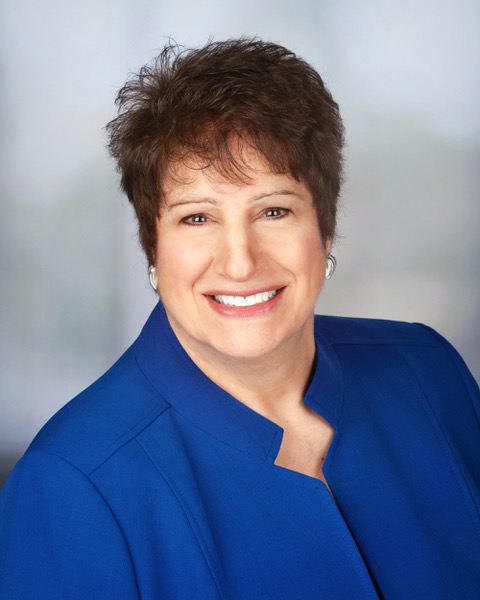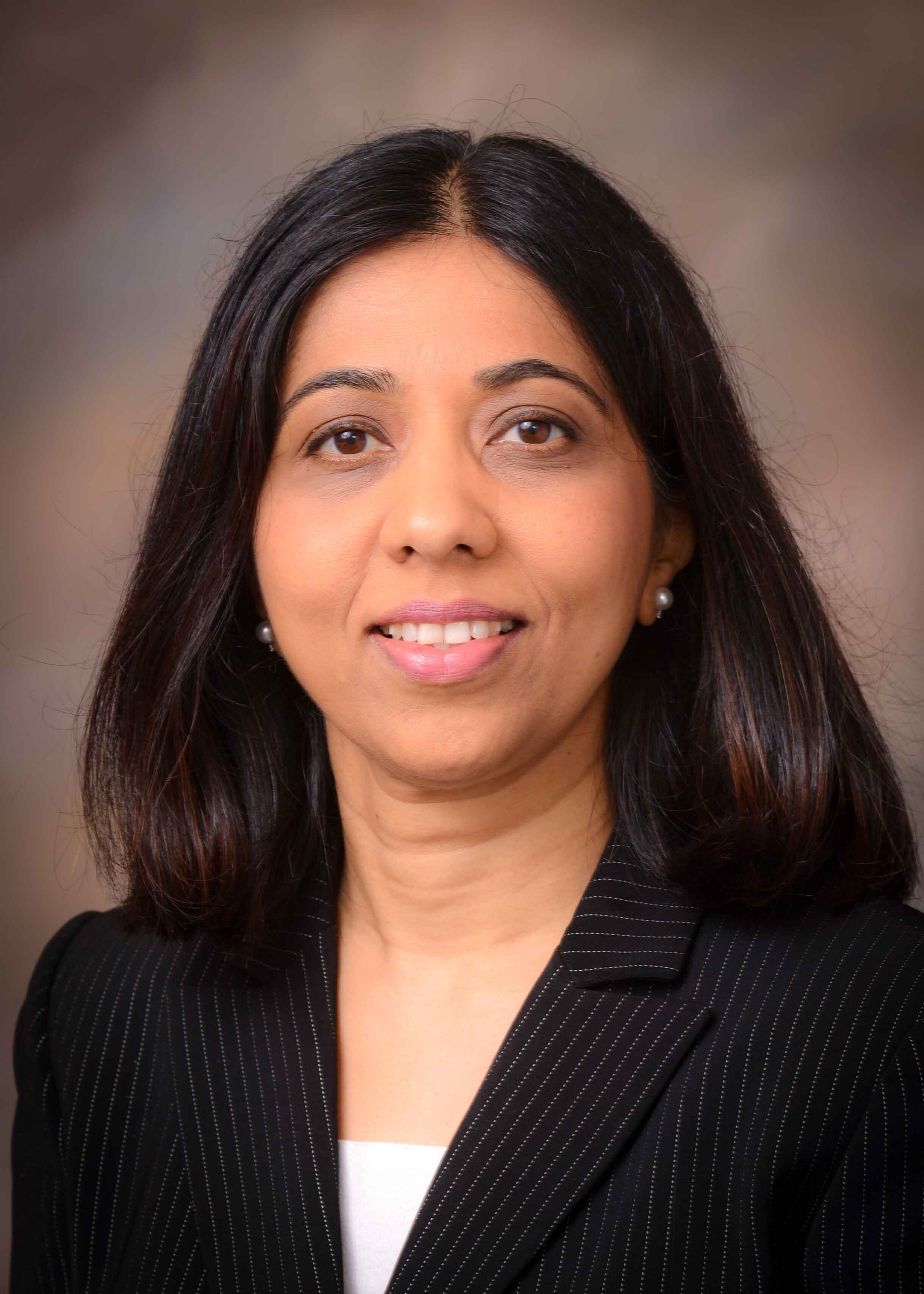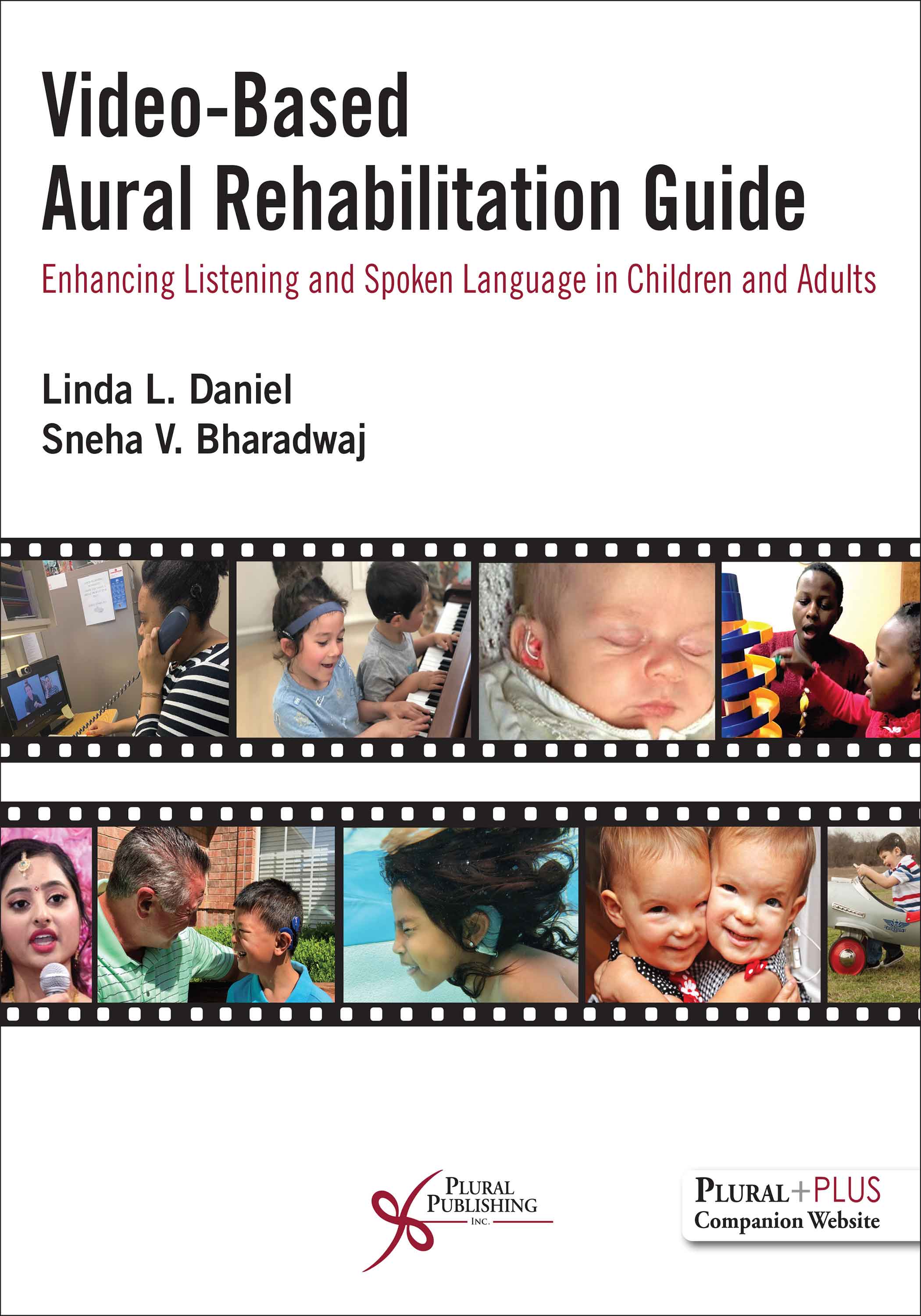
Video-Based Aural Rehabilitation Guide: Enhancing Listening and Spoken Language in Children and Adults.
First Edition
Linda L. Daniel, Sneha V. Bharadwaj
Details: 312 pages, B&W, Softcover, 8.5" x 11"
ISBN13: 978-1-63550-112-4
© 2021 | Available
A new edition of this text is here.
The Video-Based Aural Rehabilitation Guide: Enhancing Listening and Spoken Language in Children and Adults is the first aural rehabilitation book of its kind to intertwine chapter text with over 200 captioned videos. This unique resource is intended to educate undergraduate and graduate students in speech-language pathology, audiology, and education of the deaf and hard of hearing, as well as enhance the knowledge and skills of practicing professionals. The extensive videos are also an invaluable resource for students enrolled in a clinical or student teaching practicum.
Videos feature speech-language pathologists, audiologists, Listening and Spoken Language Specialists, teachers of the deaf and hard of hearing, early interventionists, otologists, and occupational therapists practicing in settings such as clinics, private practices, schools, hospitals, and the community. Topics addressed in the text and videos include hearing technologies, aural rehabilitation procedures, factors that affect intervention outcomes, fundamentals of assessment, supports for education, counseling for children and adults with hearing loss, and the psychosocial well-being of persons with hearing loss and their families.
The Video-Based Aural Rehabilitation Guide can be used as a stand-alone text or as a companion alongside the most frequently used aural rehabilitation textbooks.
Key Features
- Over 200 captioned videos accessible on a companion site
- Collaboration among 14 professionals in audiology, speech-language pathology, Listening and Spoken Language, medicine, education, research, and psychology
- Chapters with concise summaries, recommended resources for further learning, and study questions with answer keys
- Background information on the individuals featured in the videos
This exciting new text with instructional videos is a much-needed bridge that integrates the disciplines of speech-language pathology, audiology, and education of the deaf and hard of hearing to educate professionals serving children and adults with hearing loss and their families.
Genetic factors account for at least half of the cases of hearing loss diagnosed in children (CDC, 2017). Examples of genetic etiologies of hearing loss are: CHARGE syndrome (associated with colobomas, heart defects, atresia choanae, growth retardation, genital abnormalities, and ear abnormalities); Pendred syndrome (which includes hearing loss and enlarged vestibular aqueducts); connexin 26 (a genetic mutation that is one of the most common causes of inheritable childhood sensorineural hearing loss); and Usher’s syndrome (which manifests as hearing loss and progressive loss of vision). In this sample of a pediatric case interview from the companion website, Christina, mother of 14-month-old Harrison, discusses the steps involved in diagnosing her son’s hearing loss and determining its etiology.
Live voice procedures are often used to determine if listening to clear speech improves the speech recognition of a person with hearing loss. In this video, an AR practitioner uses natural rate speech and clear speech to probe Annabelle’s listening needs. Annabelle has post-linguistic, bilateral, profound hearing loss caused by encephalitis, which she contracted at the age of 47. She has been hearing with a unilateral cochlear implant for 4 months at the time of filming. This video demonstrates how Annabelle’s speech recognition improves when the practitioner speaks clearly, uses natural melody, and allows for increased processing time. The practitioner explains the importance of using clear speech to Annabelle’s mother in order to facilitate their communication in daily life.
Review
"Video-Based Aural Rehabilitation Guide, the first of its kind, is a video-textbook resource containing not only invaluable evidence-based information but also featuring numerous videos intended to educate university students enrolled in audiology and speech pathology. [...]
Themes covered range from, aural rehabilitation, cochlear implants, intervention and early diagnosis, educational support for students with hearing loss, quality of life, and counselling, to name a few. Each chapter has a natural flow, the authors introduce the relevant topic, discuss pertinent information, present a case and work with the reader to reach the appropriate diagnosis and rehabilitation plan using evidence-based guidelines and the most recent peer-reviewed research in the area. Additionally, the authors complement the use of content with videos hyperlinked in-text, allowing the reader to engage with the patients, patients’ significant others and the practicing professionals. The authors have succeeded in transforming the use of complementary videos as a form of digital storytelling leaving a powerful effect on their target audience, particularly from an educational perspective. The impact and effectiveness of integrating visual elements with written text has been long recognised in instructional (educational) settings such as universities for the purpose of enhancing and accelerating knowledge and skill acquisition. From an educational perspective this is an invaluable resource, one that will provide educators with additional tools in facilitating the knowledge and learning experience of their students.
It is important to note that patient-centred care is increasingly becoming the mandate for the optimal delivery of healthcare services. [...] The most common challenges identified by our students in their professional development of patient-centred care practices were the lack of appropriate role models during their clinical placements. Given that clinician professional behaviours are primarily developed during student days, it then follows that students need to be provided with curricular initiatives and various learning opportunities to promote patient-centredness in this context. Daniel and Bharadwaj (2019) in their video-textbook present videos demonstrating patient-centredness during appointments, and the importance of rapport building for optimal outcomes. The authors, across book chapters, present a step-by-step process including videos ranging from history taking, assessment, feedback, choice of hearing aids and counselling. The nature of the book design will provide audiology students with an invaluable learning experience and an opportunity to adopt the patient-centred attributes as viewed in these videos.
Given the wealth of information presented in this resource, it is particularly useful for clinicians (i.e., audiologists) who may have only practiced in a specific branch of audiological practice. The content and videos are informative with a holistic approach to improving the knowledge and skills of audiologists across numerous facets of audiological practice, including the importance of interprofessional collaboration for the optimal care of patients with hearing loss. Overall, the Video-Based Aural Rehabilitation Guide has my highest recommendation for use not only in educational and/or clinical settings but across all audiology sectors."
—Bojana Šarkić, La Trobe University, in Audiology Now (Issue 79)
Preface
Acknowledgements
Contributors
Chapter 1. Overview of Aural Rehabilitation
Sneha V. Bharadwaj, Linda L. Daniel, and Susan G. Allen
Introduction
Brief Anatomy and Physiology of the Auditory System
Types of Hearing Loss
Etiology of Hearing Loss
Diagnosis of Hearing Loss
Severity of Hearing Loss and Access to the Speech Spectrum
Treatment of Hearing Loss
Deaf Culture
Effects of Hearing Loss on the Perception and Production of Spoken Language
Impact of Hearing Loss on the Individual: The International Classification of Functioning, Disability, and Health
Effects of Auditory Deprivation Due to Hearing Loss
Aural Rehabilitation
Advocacy
Spotlight on a Family of Four with Hearing Loss: Parental Advocacy
Summary
References
Recommended Readings
Recommended Internet Sites for Further Learning
Study Questions
Answer Key
Appendix 1–1: The Principles of Auditory-Verbal Therapy
Appendix 1–2: The Principles of Auditory-Verbal Education
See the Appendix I at the end of the book for the histories of the individuals featured in Chapter 1 videos: Harry, Jerry, Aanya, Samuel, Gerald, Jaxson, Caleb, Amanda, Rebecca and Bruce, Aliza and Bruce Jr.,
Chapter 2. Hearing Aids and Hearing Assistive Technology Systems
Amyn M. Amlani and Sneha V. Bharadwaj
Introduction
Hearing Aid Candidacy and Selection
Hearing Aid Pre-Fitting Considerations
Hearing Aid Styles
Ear Molds
Components of a Hearing Aid
Procedures for Hearing Aid Fitting and Verification
Counseling and Education
Universal Newborn Hearing Screening
Challenges with Hearing Aids
Need for Daily Care and Troubleshooting
Hearing Assistive Technology Systems
Special Considerations in Hearing Aid Fitting
Over-the-Counter/Direct-to-Consumer Devices
Spotlight on Roberta: Audiological Consultation
Summary
References
Recommended Readings
Recommended Internet Sites for Further Learning
Study Questions
Answer Key
See the Appendix I at the end of the book for the histories of the individuals featured in Chapter 2 videos: Jerry and Roberta.
Chapter 3. Cochlear Implants for Children and Adults with Hearing Loss
Sneha V. Bharadwaj, Linda L. Daniel, B. Robert Peters, and Kristin King
Introduction
Cochlear Implant: Parts and Function
Candidacy
Interprofessional Collaboration
Surgical Considerations
Choice of Hearing Technologies
Reimbursement
Cochlear Implant Surgery
Intraoperative Testing
Cochlear Implant Programming
Aural Rehabilitation Following Cochlear Implantation
Spotlight on Tucker: Early Identification and Intervention
Summary
References
Recommended Readings
Recommended Internet Sites for Further Learning
Study Questions
Answer Key
See the Appendix I at the end of the book for the histories of the individuals featured in Chapter 3 videos: Terri, Liam, Annabelle, and Tucker.
Chapter 4. Auditory Brainstem Implants for Children and Adults with Hearing Loss
Sneha V. Bharadwaj, Linda L. Daniel, and B. Robert Peters
Introduction
The Auditory Brainstem Implant Device
A Brief History of the Auditory Brainstem Implant
Candidacy
Surgery and Risks
Interprofessional Collaboration
A Case Presentation: Five-Year-Old Justine
Communication Outcomes in Individuals with an ABI
Spotlight on Aanya: A Child with ABI
Summary
References
Recommended Readings
Recommended Internet Sites for Further Learning
Study Questions
Answer Key
See the Appendix I at the end of the book for the history of the individual featured in Chapter 4: Aanya
Chapter 5. Intervention After Early Diagnosis of Hearing Loss: A Listening and Spoken Language Approach
Linda L. Daniel and Christina Perigoe
Introduction
Overview of the Listening and Spoken Language Approach
Evidence-Based Practice
Diagnostic Approach to Intervention
Principles of Auditory-Verbal Practice
Spotlight on Josiah: Establishing a Foundation of Listening and Spoken Language
Summary
References
Recommended Readings
Recommended Internet Sites for Further Learning
Study Questions
Answer Key
Appendix 5–1: Auditory Checklists, Hierarchies, and Developmental Scales
Appendix 5–2: Sample Lesson Plan for Hiti
See the Appendix I at the end of the book for the histories of the individuals featured in Chapter 5 videos: Kelsey, Samuel, Liam, Charlie, Tucker, Caroline, Landon, Hiti, Jaxson, Amari, Clara, Thomas, Josiah, Landon, Caleb, and Harry.
Chapter 6. Factors Affecting Intervention and Outcomes of Children with Hearing Loss
Linda L. Daniel, Ellen A. Rhoades, and Sneha V. Bharadwaj
Introduction
Hearing Loss
Hearing Technologies and Related Factors
Language Environment
Family
Community
Cultural and Linguistic Diversity
Additional Disorders
Spotlight on Jaxson: A Child with CHARGE Syndrome
Summary
References
Recommended Readings
Recommended Internet Sites for Further Learning
Study Questions
Answer Key
See the Appendix I at the end of the book for the histories of the individuals featured in Chapter 6 Videos: Charlie, Rebecca, Aliza, Maggie, Caleb, Meghana, Amanda, Amari, Hiti, Cade, Caleb, Landon, and Jaxson.
Chapter 7. Educational Supports for Students with Hearing Loss: Primary through Post-Secondary Settings
Sarah D. Wainscott and Sneha V. Bharadwaj
Introduction
Supporting a Continuum of Communication Approaches
Facilitating Decisions Regarding Educational Placement
Identifying and Implementing Communication-Related Accommodations
Interprofessional Collaboration
Teaching Strategies
Providing Ongoing Communication Supports
Promoting Transition Planning and Advocacy
Facilitating Self-Identity and Self-Determination
Spotlight on the Oklahoma School for the Deaf and Sunshine Cottage School for the Deaf: Two Educational Philosophies
Summary
References
Recommended Readings
Recommended Internet Sites for Further Learning
Study Questions
Answer Key
See the Appendix I at the end of the book for the histories of the individuals featured in Chapter 7 videos: Aanya, Cade, Meghana, Maggie, and Rhegan.
Chapter 8. Aural Rehabilitation for Adults with Hearing Loss
Linda L. Daniel, Kristin King, Linda Thibodeau, and Carol Cokely
Introduction
Aural Rehabilitation with a Heterogeneous Population
Quality of Life for Persons with Hearing Loss, Their Families, and Communication Partners
Assessment of Aural Rehabilitation Needs
Aural Rehabilitation to Improve Communication
Factors Affecting Aural Rehabilitation Goals, Procedures, and Outcomes
Hearing Assistive Technology Systems
Spotlight on Cindy: Self-Determination and Self-Advocacy
Summary
References
Recommended Readings
Recommended Internet Sites for Further Learning
Study Questions
Answer Key
Appendix 8–1: TELEGRAM Assessment Tool
See the Appendix I at the end of the book for the histories of the individuals featured in Chapter 8 videos: Jerry, Rebecca, Amanda, Roberta, Gerald, Annabelle, Cindy, Brittany, and Terri.
Chapter 9. Fundamentals of Assessing Communication Skills in Children and Adults with Hearing Loss
Sneha V. Bharadwaj and Jill Duncan
Introduction
Interprofessional Collaboration
Objectives of Assessment
Types of Assessment
Accommodations and Modifications
Cultural and Linguistic Diversity
Case Presentation: Five-Year-Old Hiti
Special Considerations in the Assessment of Children and Adults with Hearing Loss
Spotlight on Silas: A Child with Social Communication Needs
Summary
References
Recommended Readings
Recommended Internet Sites for Further Learning
Study Questions
Answer Key
See the Appendix at the end of the book for the histories of the individuals featured in Chapter 9 videos: Silas, Josiah, Landon, Clara, Liam, Harry, Jaxson, Bruce Jr, Annabel, Terri, Meghana, Jerry, and Hiti.
Chapter 10. Quality of Life, Counseling, and Advocacy for Children and Adults with Hearing Loss
Linda L. Daniel, Andrea D. Warner-Czyz, and Roshini Kumar
Introduction
Effects of Hearing Loss on Quality of Life
Counseling Individuals with Hearing Loss
Advocacy
Spotlight on Kim: Advocacy for People with Deaf-Blindness
Summary
References
Recommended Readings
Recommended Internet Sites for Further Learning
Study Questions
Answer Key
See the Appendix I at the end of the book for the histories of the individuals featured in Chapter 10 videos: Kelsey, Aliza, Bruce, Amanda, Charlie, Jaxson, Landon, and Silas.
Appendix I: Background Information on Persons with Hearing Loss Featured in the Videos
Appendix II: A Brief History of Aural Rehabilitation
Index
Purchase of Video-Based Aural Rehabilitation Guide: Enhancing Listening and Spoken Language in Children and Adults comes with access to supplementary multimedia files on a PluralPlus companion website.
To access the multimedia files, you must register the access code printed on the inside front cover of your book on the companion website and log in.
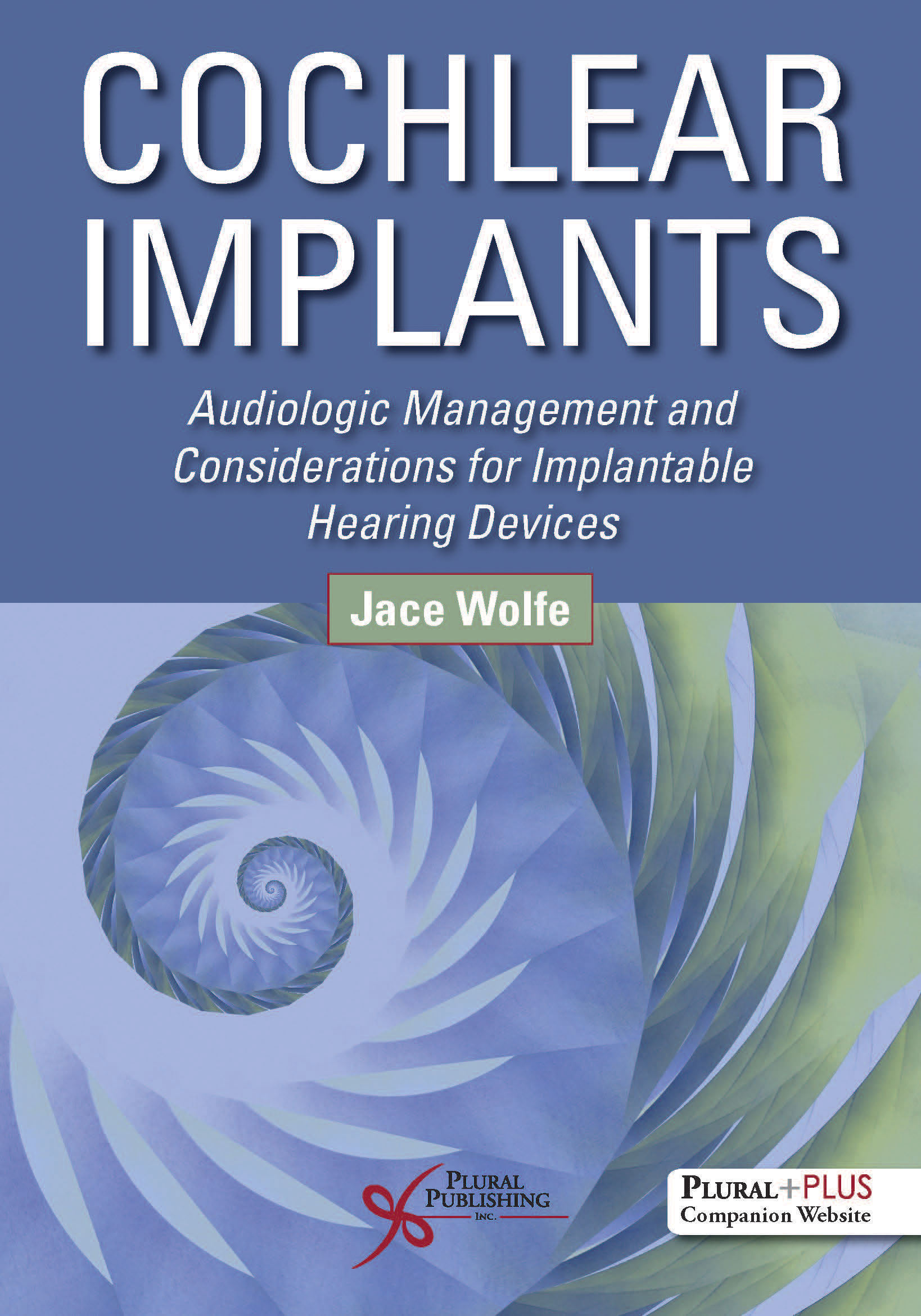
Cochlear Implants: Audiologic Management and Considerations for Implantable Hearing Devices
First Edition
Jace Wolfe
Details: 858 pages, Full Color, Hardcover, 8.5" x 11"
ISBN13: 978-1-59756-892-0
© 2020 | Available
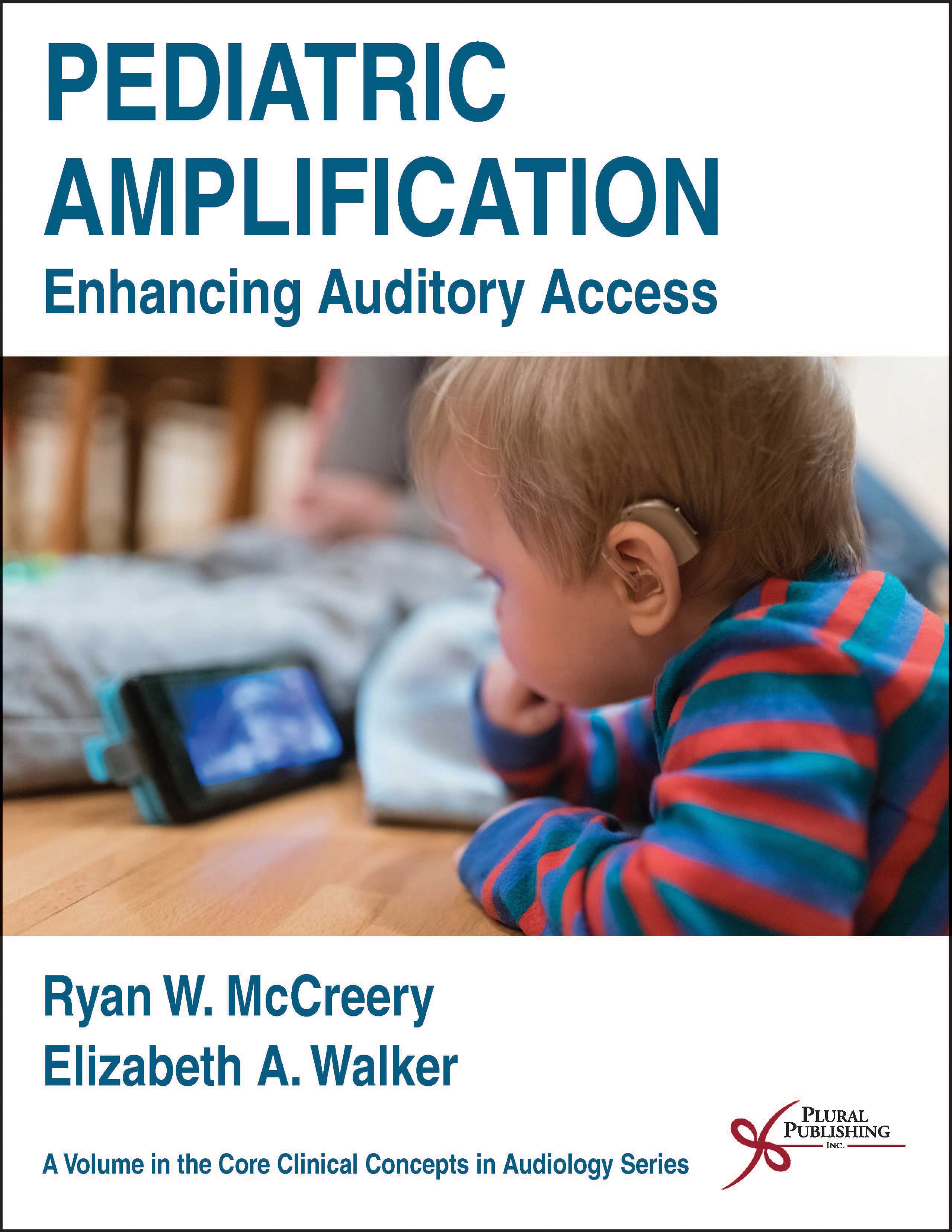
Pediatric Amplification: Enhancing Auditory Access
First Edition
Ryan W. McCreery, Elizabeth A. Walker
Details: 272 pages, B&W, Softcover, 8.5" x 11"
ISBN13: 978-1-59756-992-7
© 2017 | Available
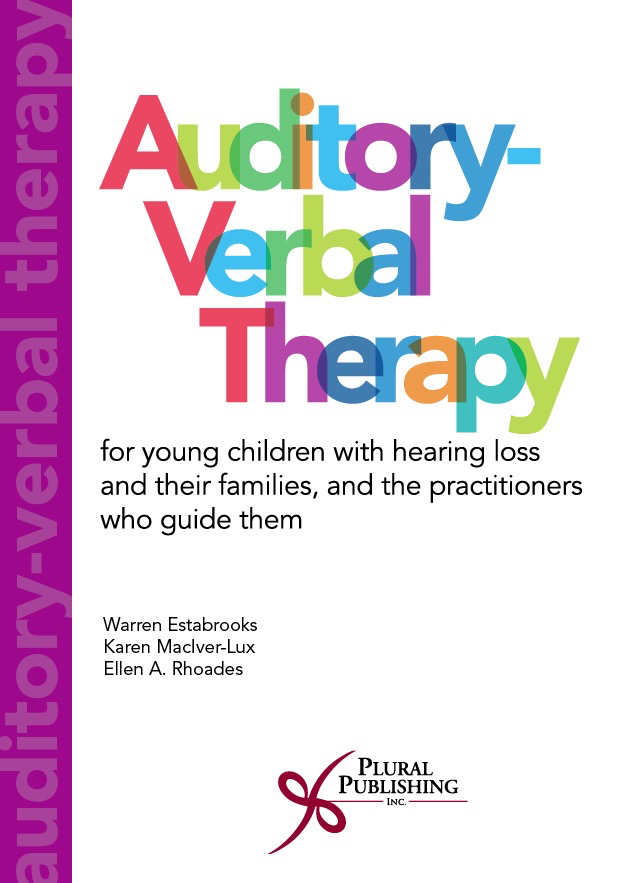
Auditory-Verbal Therapy: For Young Children with Hearing Loss and Their Families, and the Practitioners Who Guide Them
First Edition
Warren Estabrooks, Karen MacIver-Lux, Ellen A. Rhoades
Details: 602 pages, B&W, Hardcover, 7" x 10"
ISBN13: 978-1-59756-888-3
© 2016 | Available
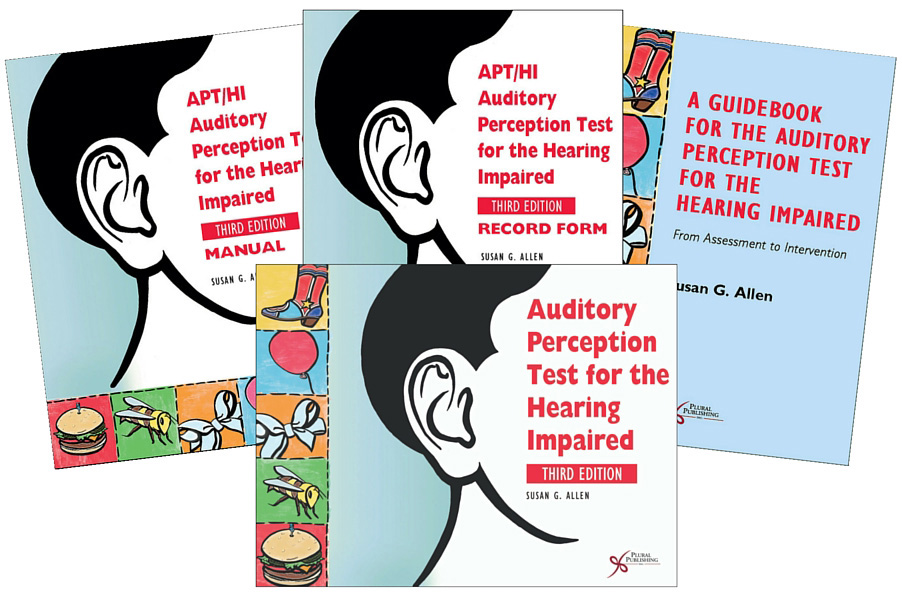
Auditory Perception Test for the Hearing Impaired (APT/HI)
Third Edition
Susan G. Allen
Details: Full Color, Spiral-Bound Test Book, 8.5" x 11", plus Guidebook and Companion website with supplementary materials
ISBN13: 978-1-59756-590-5
© 2016 | Available
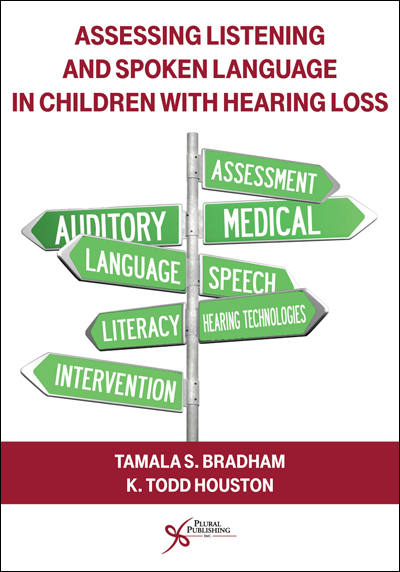
Assessing Listening and Spoken Language in Children with Hearing Loss
First Edition
Tamala S. Bradham, K. Todd Houston
Details: 496 pages, B&W, Softcover, 7" x 10"
ISBN13: 978-1-59756-576-9
© 2015 | Available
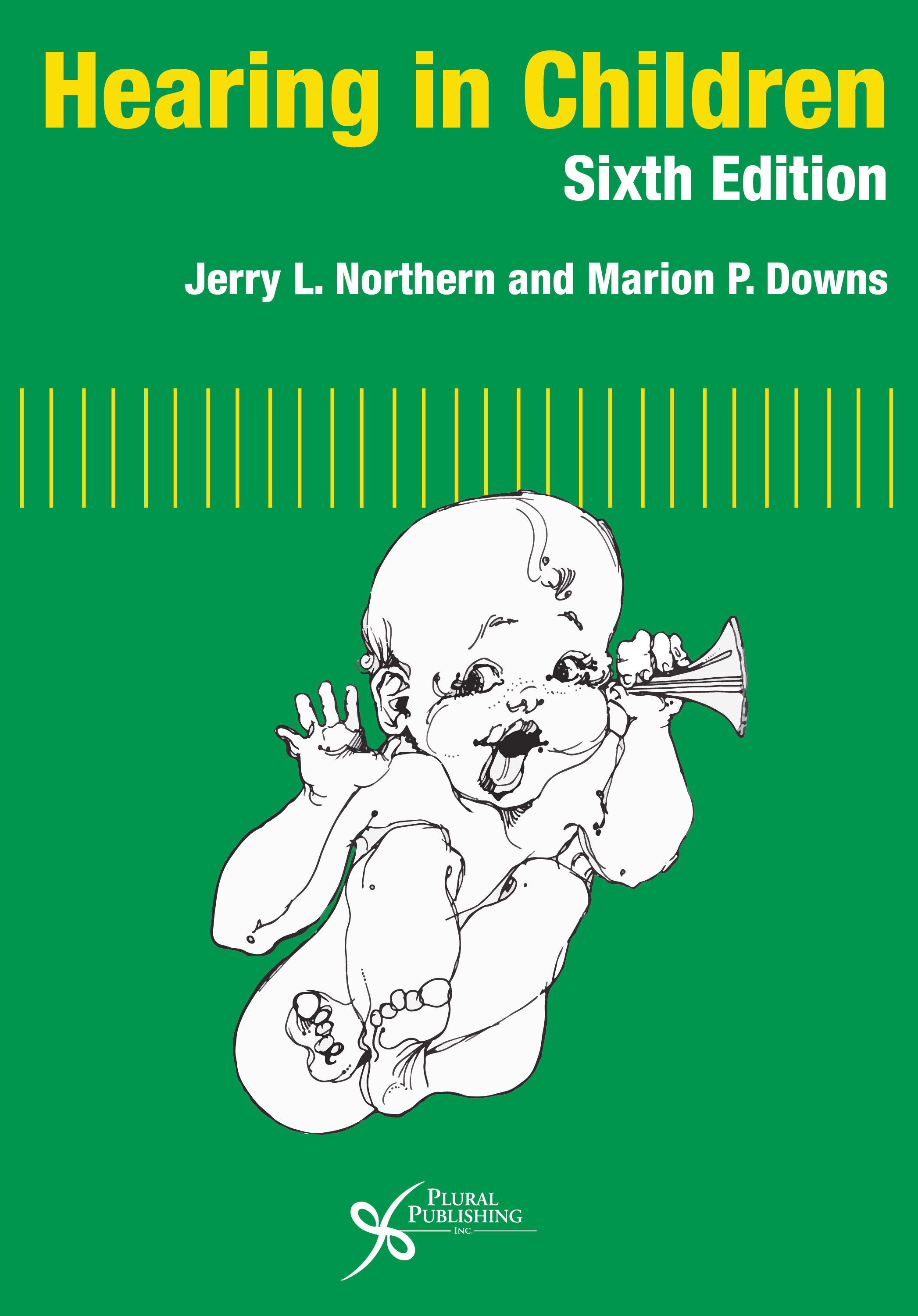
Hearing in Children
Sixth Edition
Jerry L. Northern, Marion P. Downs
Details: 720 pages, B&W, Hardcover, 7" x 10"
ISBN13: 978-1-59756-392-5
© 2014 | Available
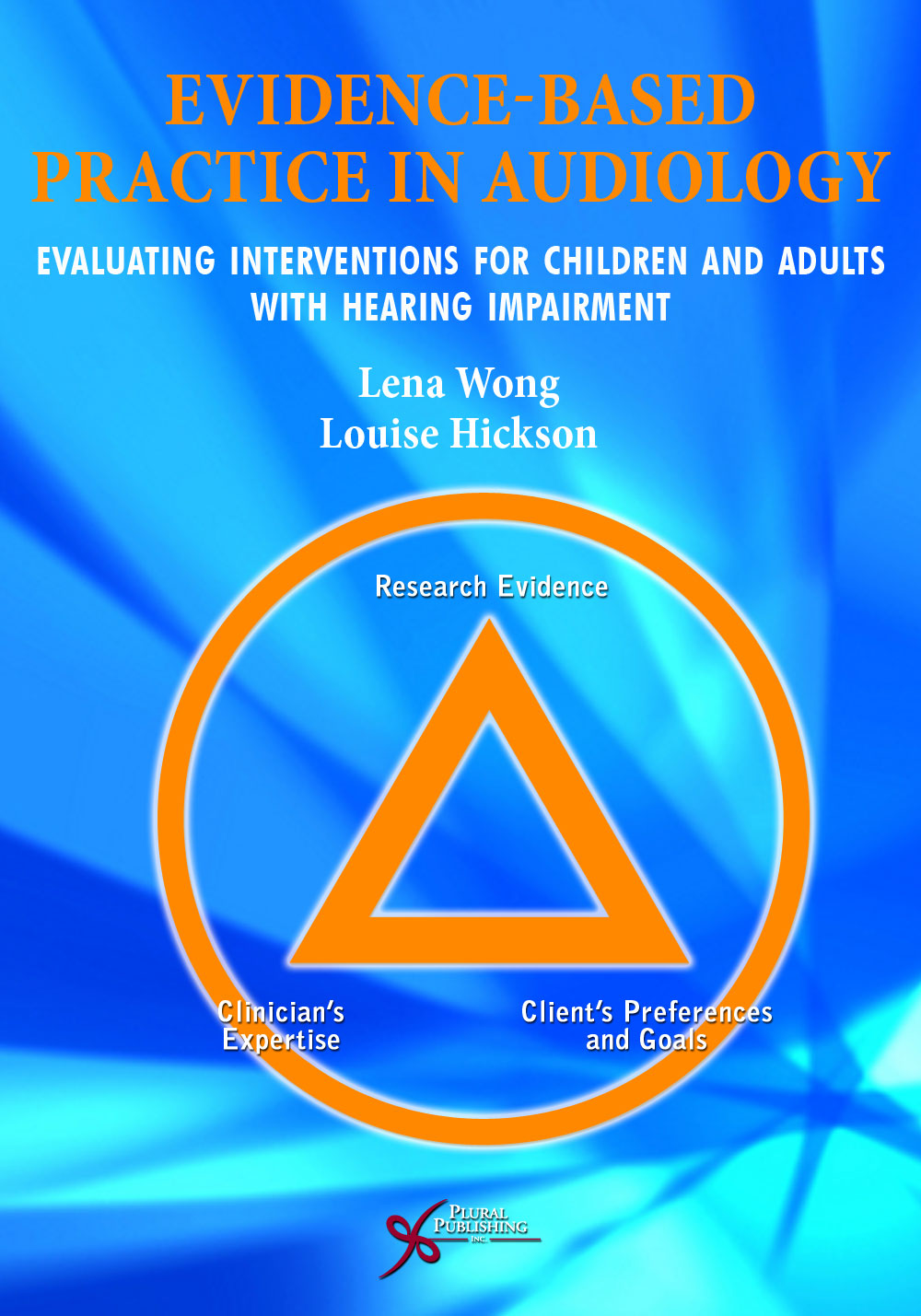
Evidence-Based Practice in Audiology: Evaluating Interventions for Children and Adults with Hearing Impairment
First Edition
Lena Wong, Louise Hickson
Details: 356 pages, B&W, Softcover, 7" x 10"
ISBN13: 978-1-59756-419-9
© 2012 | Available
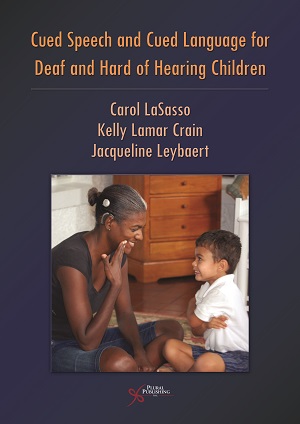
Cued Speech and Cued Language for Deaf and Hard of Hearing Children
First Edition
Carol LaSasso, Kelly Lamar Crain, Jacqueline Leybaert
Details: 606 pages, B&W, Softcover, 7" x 10"
ISBN13: 978-1-59756-334-5
© 2010 | Available
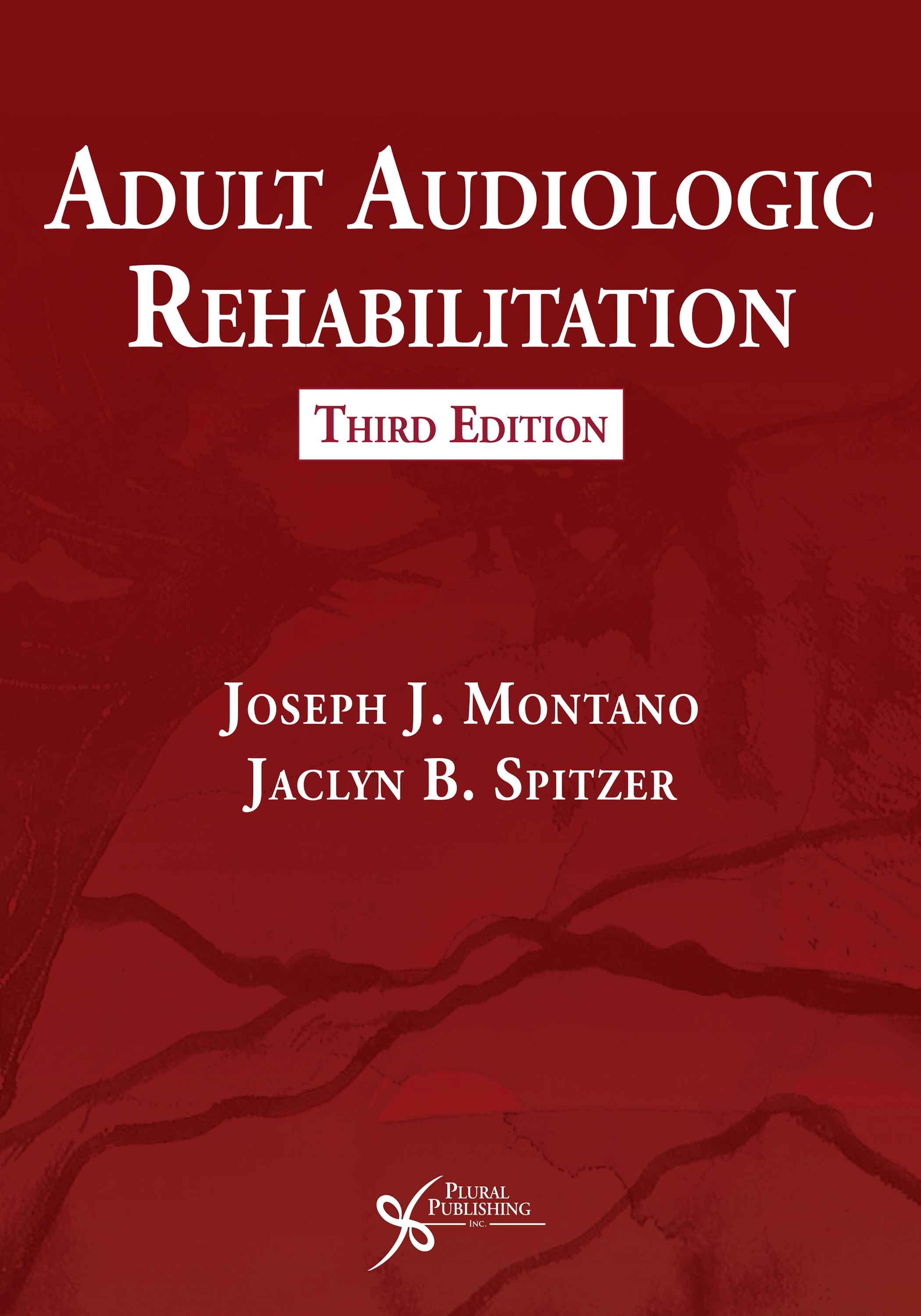
Adult Audiologic Rehabilitation
Third Edition
Joseph J. Montano, Jaclyn B. Spitzer
Details: 610 pages, B&W, Softcover, 8.5"x11"
ISBN13: 978-1-63550-143-8
© 2021 | Available
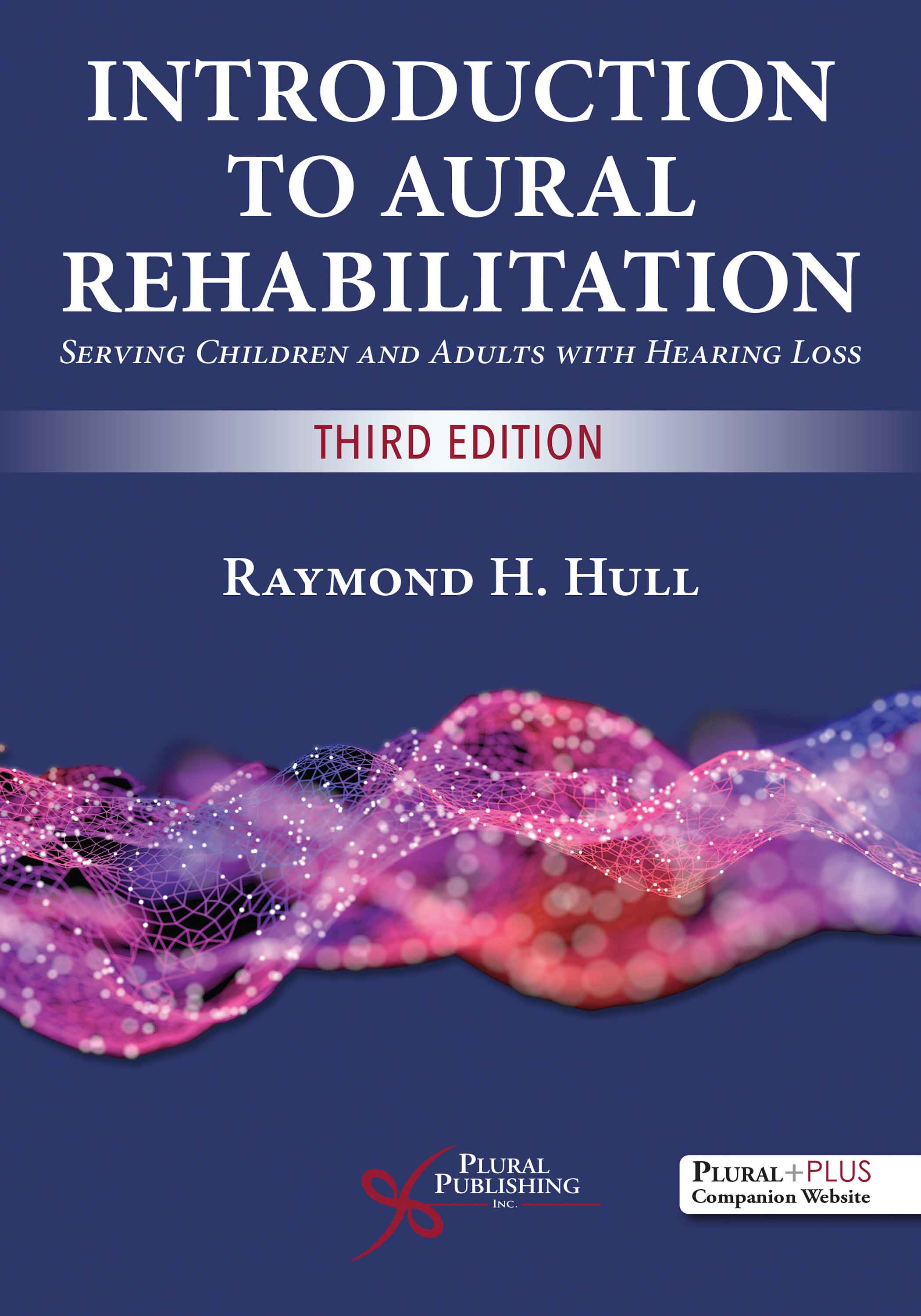
Introduction to Aural Rehabilitation: Serving Children and Adults with Hearing Loss
Third Edition
Raymond H. Hull
Details: 513 pages, 2-Color, Softcover, 7" x 10"
ISBN13: 978-1-63550-114-8
© 2021 | Available
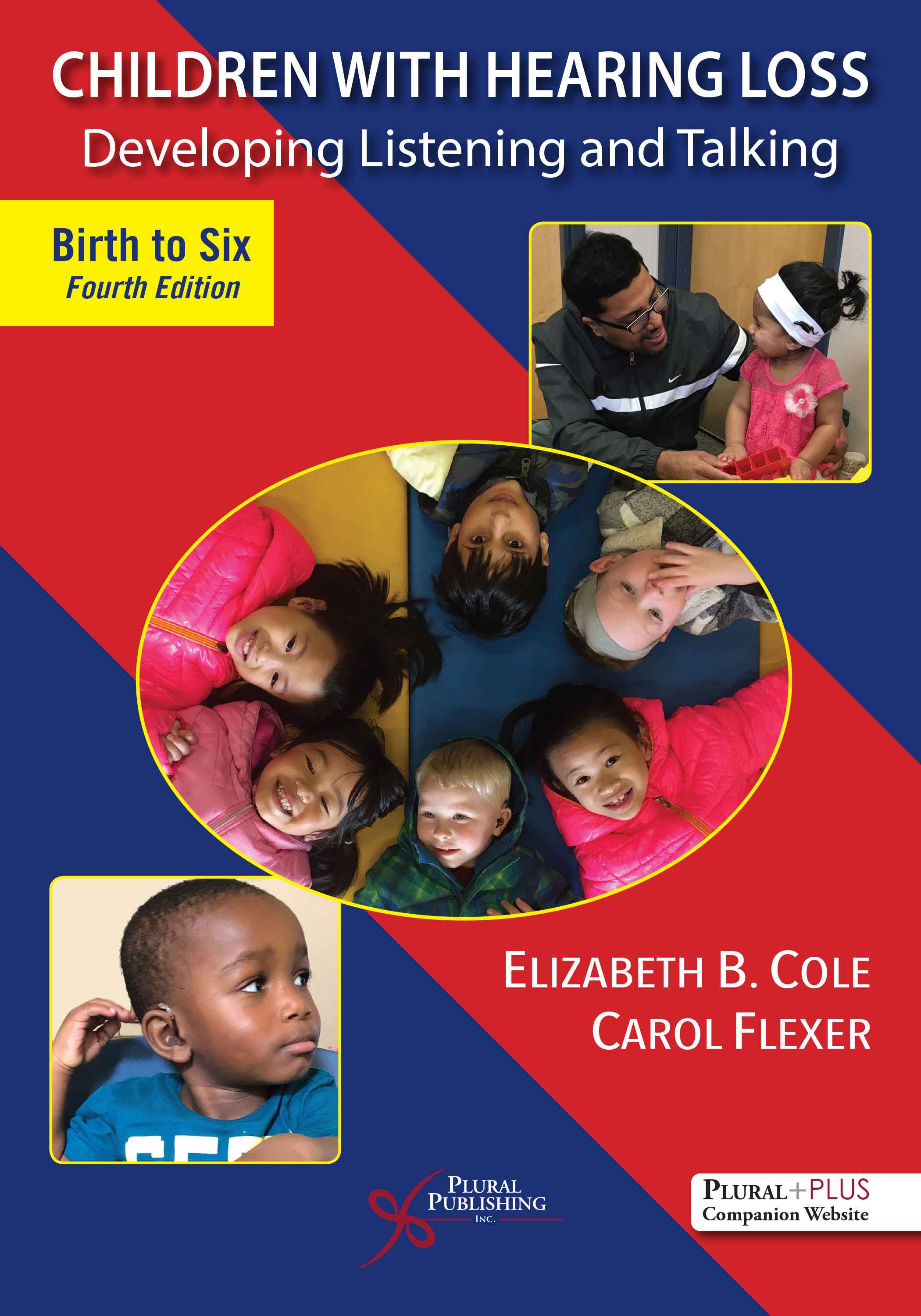
Children with Hearing Loss: Developing Listening and Talking, Birth to Six
Fourth Edition
Elizabeth B. Cole, Carol Flexer
Details: 411 pages, B&W, Softcover, 7" x 10"
ISBN13: 978-1-63550-154-4
© 2020 | Available
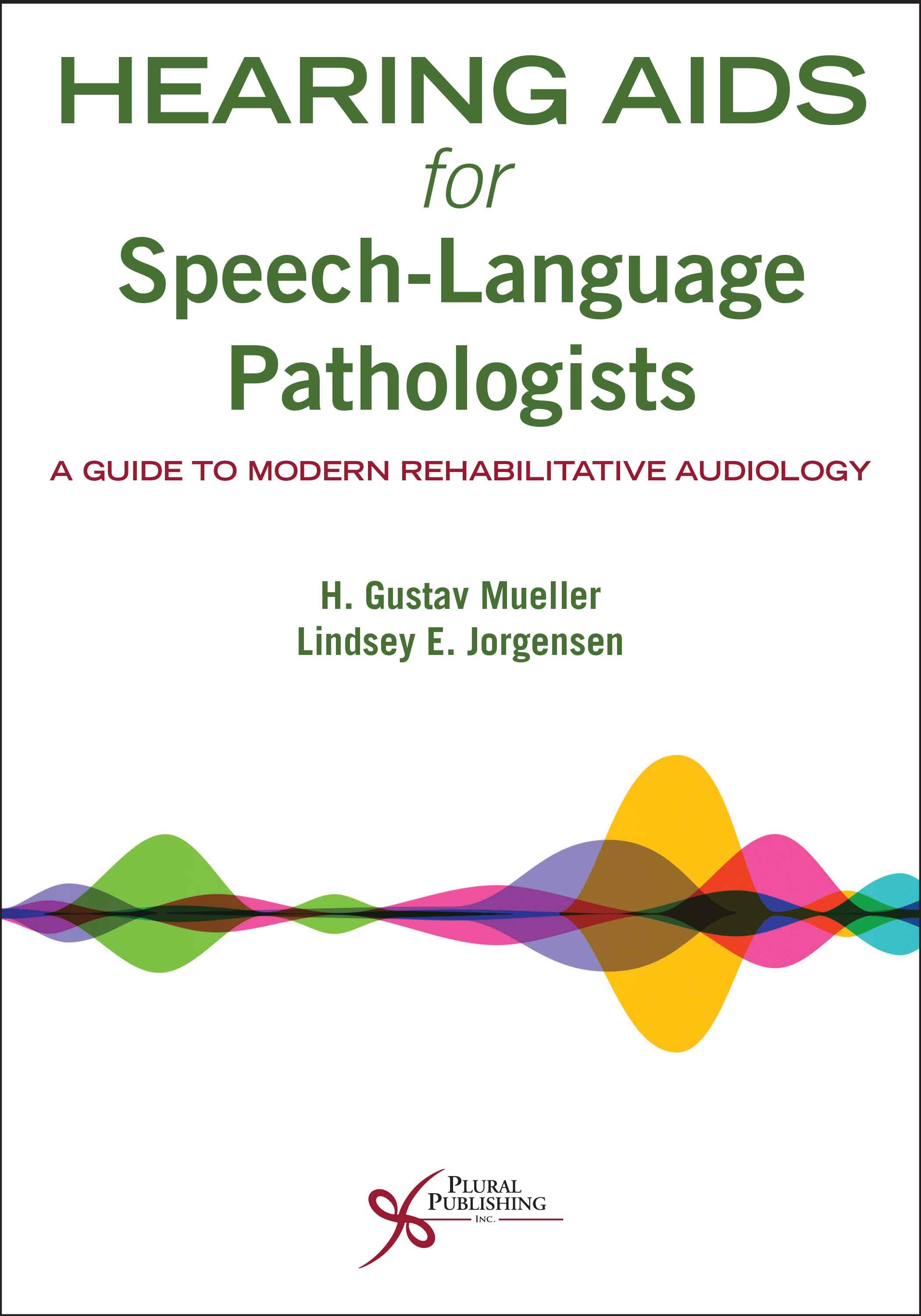
Hearing Aids for Speech-Language Pathologists: A Guide to Modern Rehabilitative Audiology
First Edition
H. Gustav Mueller, Lindsey E. Jorgensen
Details: 445 pages, B&W, Softcover, 7" x 10"
ISBN13: 978-1-63550-214-5
© 2020 | Available
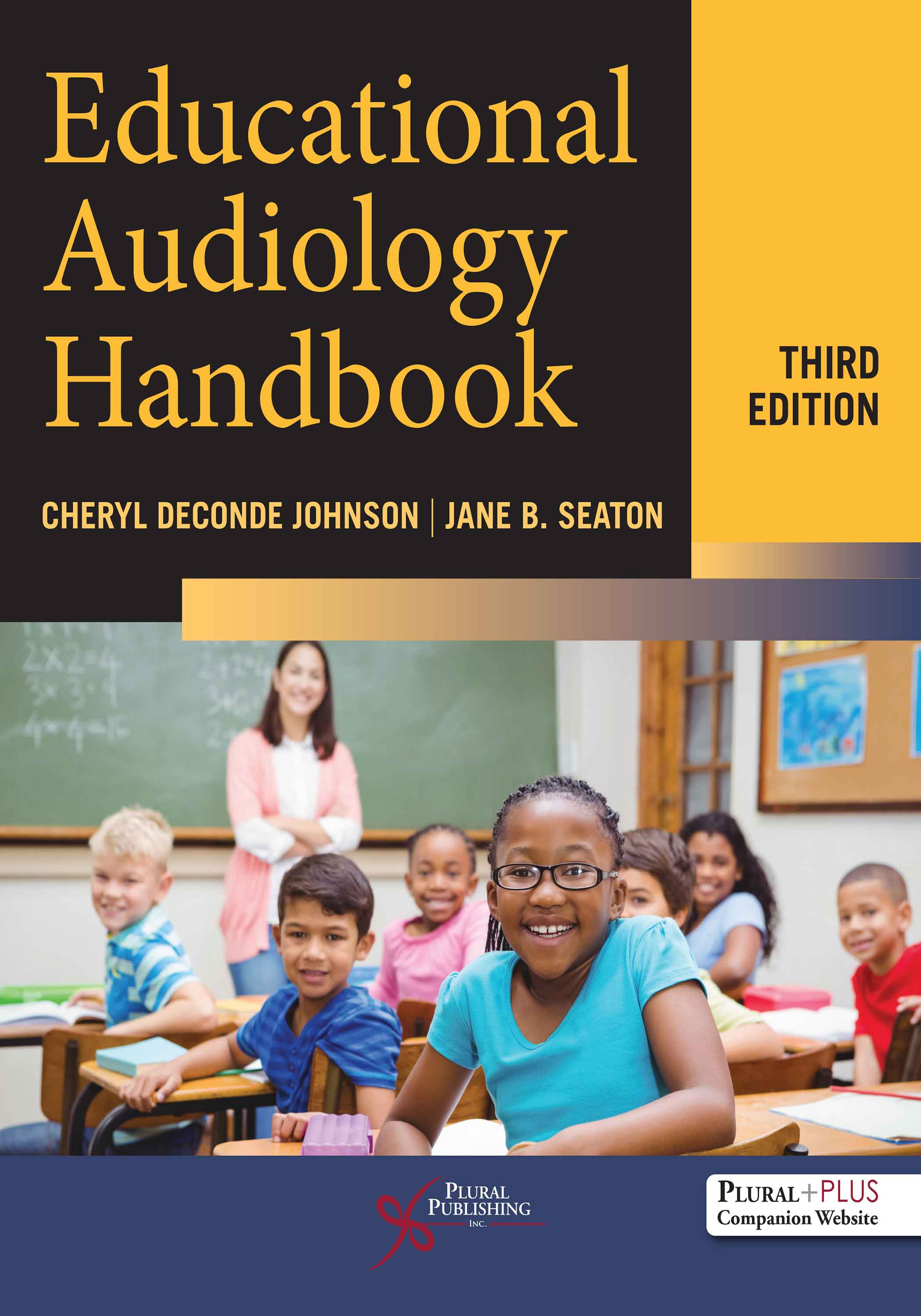
Educational Audiology Handbook.
Third Edition
Cheryl DeConde Johnson, Jane B. Seaton
Details: 606 pages, B&W, Softcover, 8.5" x 11'
ISBN13: 978-1-63550-108-7
© 2021 | Available
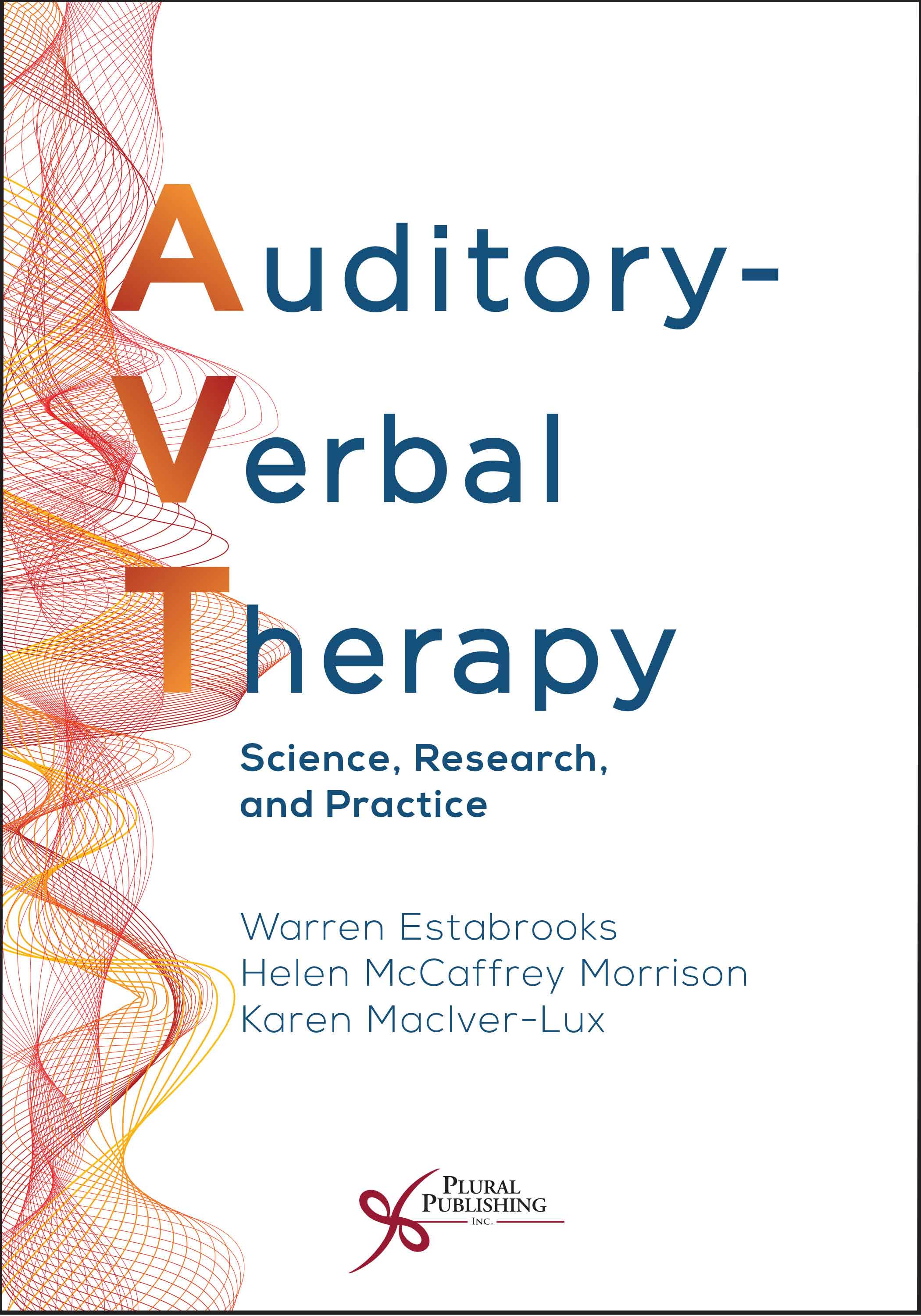
Auditory-Verbal Therapy: Science, Research, and Practice
First Edition
Warren Estabrooks, Helen McCaffrey Morrison, Karen MacIver-Lux
Details: 934 pages, B&W, Hardcover, 7" x 10"
ISBN13: 978-1-63550-174-2
© 2020 | Available
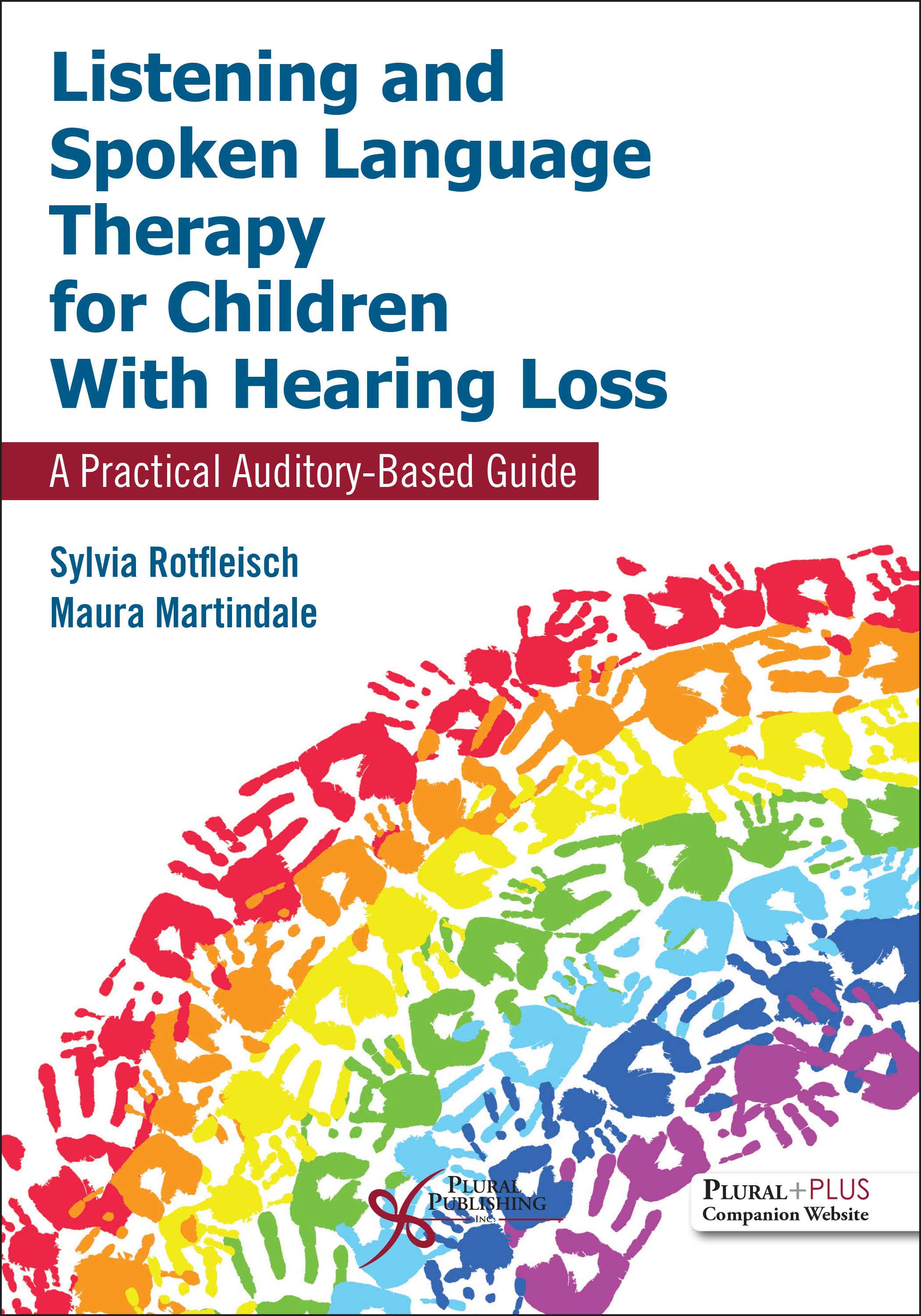
Listening and Spoken Language Therapy for Children With Hearing Loss: A Practical Auditory-Based Guide
First Edition
Sylvia Rotfleisch, Maura Martindale
Details: 310 pages, Full Color, Softcover, 7" x 10"
ISBN13: 978-1-63550-387-6
© 2023 | Available
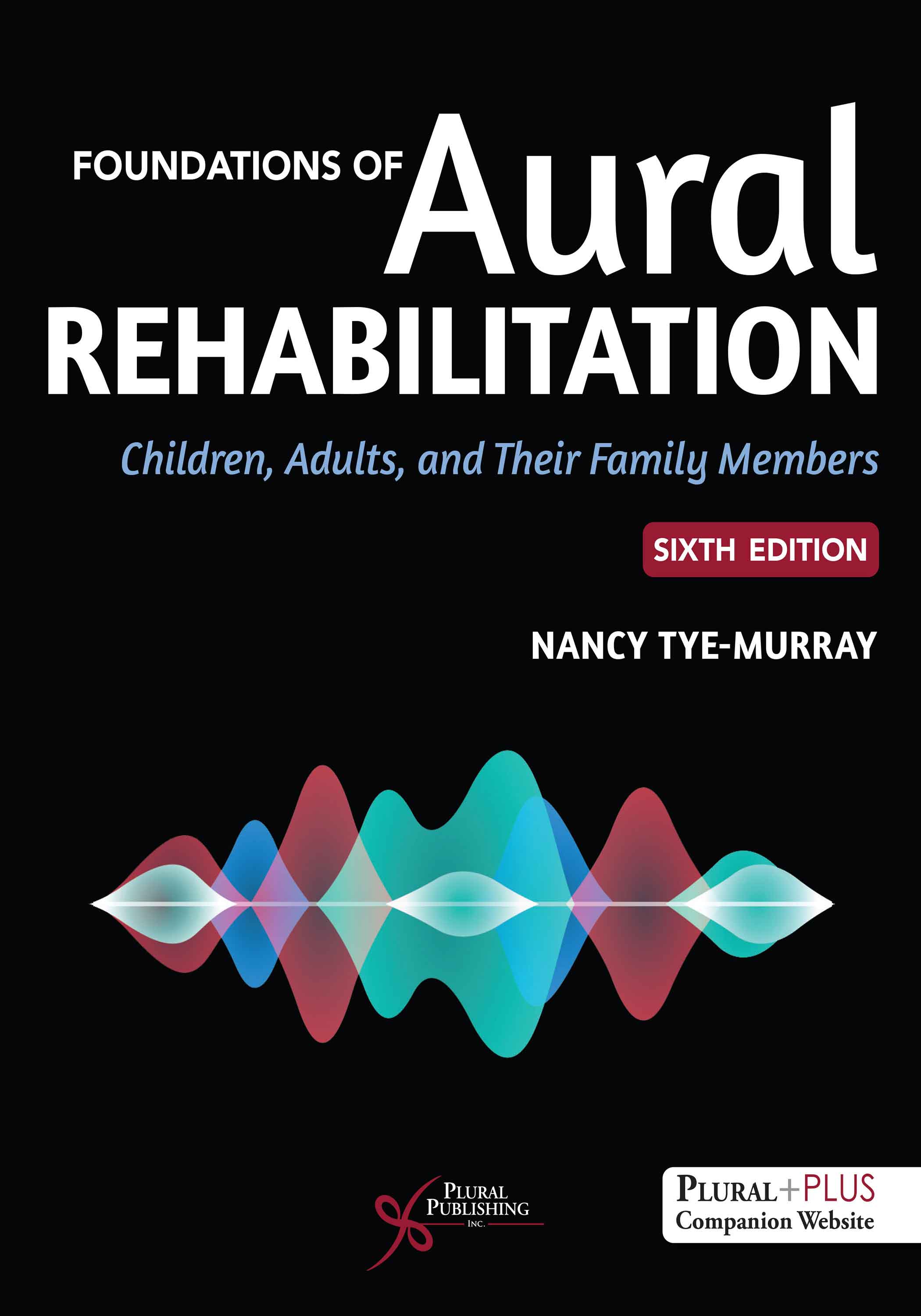
Foundations of Aural Rehabilitation: Children, Adults, and Their Family Members
Sixth Edition
Nancy Tye-Murray
Details: 567 pages, 2-Color, Softcover, 8.5" x 11"
ISBN13: 978-1-63550-420-0
© 2024 | Available

